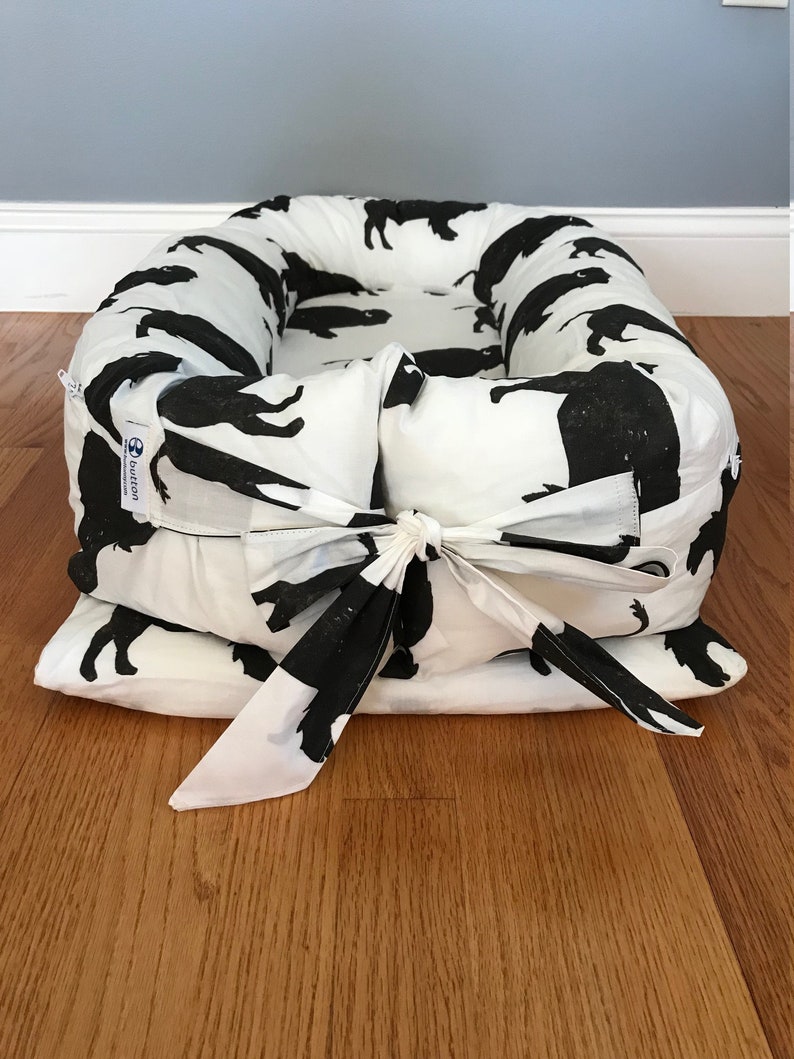

Check withīased on the evidence, the AAP doesn't recommend bed sharing with your baby under any circumstances.
#DOCK A TOT COVER FREE#
If you need financial help, there are organizations throughout the United States that provide low-cost or free sleep surfaces. As soon as you can get a CPSC-approved sleep surface, move your baby to that instead.


In an emergency, you can temporarily put your baby to sleep in a box, basket, dresser drawer or something similar. Examples include Boppy pillows and Dock-a-Tots. If your baby falls asleep in a car seat, stroller, swing, infant carrier or sling, you should move them to a firm sleep surface on their back as soon as possible.ĭon't use products for sleep that aren't specifically marketed for infant sleep. If a product doesn't meet federal safety standards, avoid it. Inclined sleep products, hammocks, baby boxes, in-bed sleepers, baby nests and pods, compact bassinets, travel bassinets and baby tents.

#DOCK A TOT COVER PORTABLE#
June 2021 CPSC rule that all infant sleep products must meet the existing federal safety standards for cribs, bassinets, portable cribs or play yards. Use a fitted sheet only-nothing else should be in the crib with your baby.ĭon't use a crib that doesn't have instructions, is missing hardware or that's broken.Īlternative sleep surfaces are only considered a safe option if they comply with the Make sure your crib mattress is designed for your specific crib and that it fits tightly. Place your baby in a crib, bassinet, portable crib or play yard that meets the safety standards of theĬonsumer Product Safety Commission (CPSC).Ĭheck the CPSC website to make sure your crib hasn't been recalled, especially if it's not new. Any surface that inclines more than 10 degrees isn't safe for your baby to sleep on. Your baby could roll into any of these items, which could block their airflow.Ī firm surface means that it shouldn't indent when your baby is lying on it. Be sure that there are no blankets, pillows, stuffed toys or bumper pads in your baby's bed, though. You should always place your baby to sleep on their back, but if they're comfortable rolling both ways (back to tummy, tummy to back), then you don't need to keep turning your baby to their back again. Some babies will roll onto their stomachs.This helps them adjust to sleeping on their backs before going home. Preemies may need to be on their stomachs temporarily while they're in the NICU, but you should place them on their backs as soon as they're medically stable.After that, or when the mother needs to sleep or take care of her other needs, the baby should be placed on their back in a bassinet with no incline. A newborn should be placed skin-to-skin with their mother as soon after birth as possible, for at least an hour.Gastroesophageal reflux disease (GERD) should sleep flat on their backs. But your baby's airway anatomy and their gag reflex will keep that from happening. Some parents worry that babies will choke when they're on their backs. The problem with the side position is that your baby can roll more easily onto their stomach. Put your baby on their back for all naps & at nightīabies who sleep on their backs are much less likely to die suddenly and unexpectedly than babies who sleep on their stomachs or sides. Here are some ways you can help create a safe sleep environment. Our guidance on safe sleep helps to protect babies from these deaths.Ī safe sleep environment lowers the risk of all sleep-related infant deaths.
#DOCK A TOT COVER HOW TO#
We also know how to prevent unintentional suffocation and strangulation in bed. Recommendations for a safe sleep environmentĪlthough there's no guaranteed way to prevent SIDS, research tells us that a safe sleep environment can help reduce your baby's risk of SIDS. Talk with your pediatrician if you have questions about any of the recommendations listed. Note: Unless mentioned otherwise, all these recommendations are for babies up to 1 year of age. Risk of SIDS, as well as some new recommendations. This updates our 2016 guidance and includes additional ways to reduce the Revised our policy statement and technical report on safe sleep. To reduce the risk of all sleep-related infant deaths, we've Most of these tragic deaths are due to sudden infant death syndrome (SIDS) or accidental deaths from suffocation or strangulation. Every year, around 3,500 babies in the United States die suddenly and unexpectedly while they're sleeping.


 0 kommentar(er)
0 kommentar(er)
